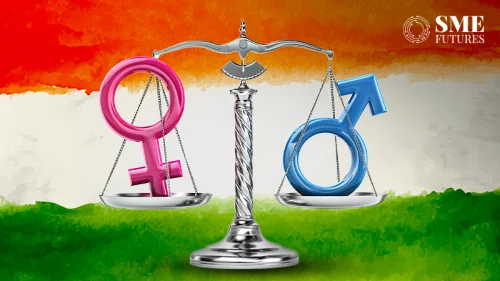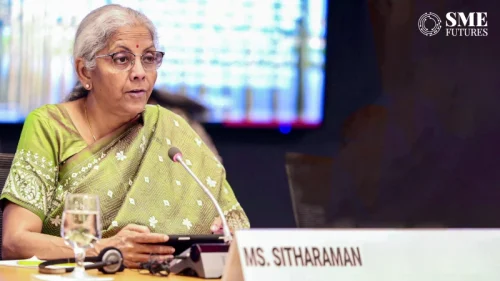While India has just achieved the world’s fastest 5G rollout, the country is also playing a key role in the global telecom sector in initiating strides towards creating 6G or sixth generation communication technology as the next big thing on the communication horizon.
Despite being at a concept stage, 6G is already making waves with its promise of unified human-machine and machine-machine connectivity and offers a glimpse of the future.
The next generation 6G will build upon 5G technology and provide more reliable, ultra-low latency and affordable solutions with speeds almost 100 times faster than 5G, to enhance and drive new communication applications.
Prime Minister Narendra Modi inaugurated the new International Telecommunication Union (ITU) Area Office & Innovation Centre in March 2023 at a programme in Vigyan Bhawan, Delhi where he also unveiled the Bharat 6G Vision Document and launched the 6G R&D Test Bed in the country.
The Bharat 6G Vision Document envisages India to be a front line contributor in design, development and deployment of 6G technology by 2030.
Emphasising the fast pace of technology adoption in the country, he pointed out, “India is discussing 6G just six months after the world’s fastest 5G rollout in the country.”
India has played a pivotal role in formulating the ITU’s 6G Vision Framework along with the collaborative efforts of member countries of the United Nations.
The efforts of India’s Department of Telecommunications in prioritising 6G standardisation, have successfully resulted in adoption of Ubiquitous Connectivity, Ubiquitous Intelligence and Sustainability as key elements of 6G Technology and also enhanced India’s position in the international telecommunication space.
The 6th Generation or 6G Technology has been named ‘IMT 2030’ by ITU, the specialised agency for Information and Communication Technologies of the United Nations.
The recommendation of ITU for 6G Framework, approved on June 22, 2023, will serve as a foundation document in 6G research and development (R&D) and will pave the way for development of 6G Technology worldwide.
Bharat 6G Vision is based on the principles of affordability, sustainability and ubiquity. It aims to enable India to take its rightful place in the world as a leading supplier of advanced telecom technologies and solutions that are affordable and contribute to the global good.
India’s Telecommunication Engineering Centre (TEC) has spearheaded the country’s standardisation work on this 6G Framework. The inclusive approach adopted by TEC has resulted in wide stakeholder participation in the National Study Group (NSG) with the involvement of major industries, startups, and academia and R&D organisations.
The TEC-led NSG has been working on this framework for the last few years, and has been advocating for India-specific requirements at the international forum.
In the past, India, through NSG, had also contributed to the development of 5G Technology, a key outcome of which was adoption of Low Mobility Large Cell (LMLC) by ITU as a 5G use case.
The Indian telecom sector’s success story is reflected in the fact that broadband connectivity had 60 million users in the country before 2014 but that number has gone up to over 800 million today.
The number of Internet connections in India is more than 85 crore compared with 25 crore before 2014.
For the achievement of Mission 6G, India must focus on aligning its research on technologies in the coming decade that would bolster and propel the implementation of 6G in the country in a highly customised manner, according to the Bharat 6G Vision.
To further explore the impact of 6G in India and to investigate how the country can realise its mission of becoming a global leader in this space, the Technology Innovations Group set up six task forces to explore the major pillars of the 6G Vision Technology Innovations Group.
Based on their deliberations on the 6G ecosystem, they have recommended extensive research in mmWave and Terahertz communications, fiber-broadband, Tactile Internet and Remote Operations, multi-sensor man-machine interfaces and devices leveraging edge cloud computing resources.
Well-placed headways into Artificial Intelligence, Space-Terrestrial Integration, combined communication and sensing in (Sub) Terahertz bands, SoCs, and innovative solutions emanating from CoEs can further be accentuated by participation in and contribution to global standards forums and leveraging of the startups of today.
All this and more can be achieved with a robust and much-needed R&D funding mechanism, the vision document states.
India plans to identify priority areas for research by involving all stakeholders including industry, academia, and service providers, spanning theoretical and simulation studies, proof-of-concept prototypes and demonstrations, and early market interventions through startups, to take the lead.
While the basic objective for India will be a customised 6G implementation plan, acceptance and support from the global community can fast forward our commercialisation drive and pave the way for further newer technologies, the vision document points out.
India has the necessary wherewithal to drive the 6G wave globally and leverage this powerful force multiplier to transform itself into a leading global supplier of advanced, relevant, and affordable telecom systems and solutions.










